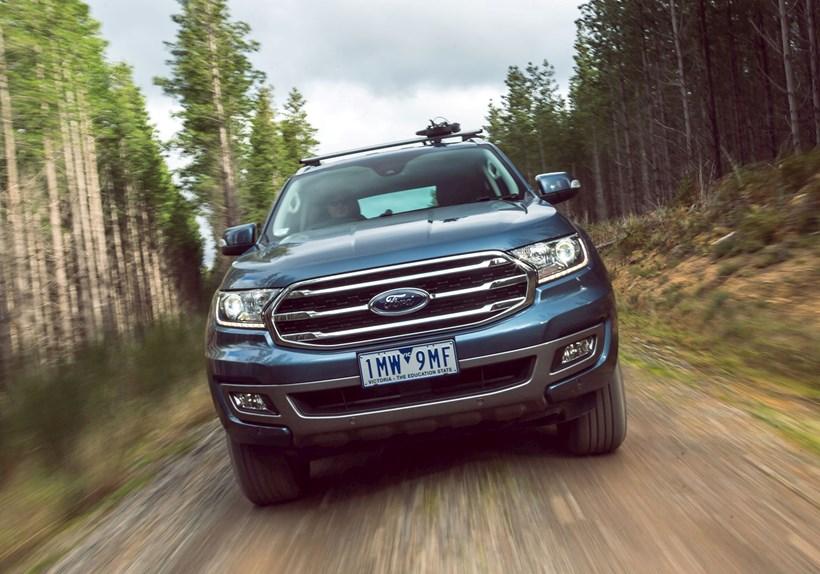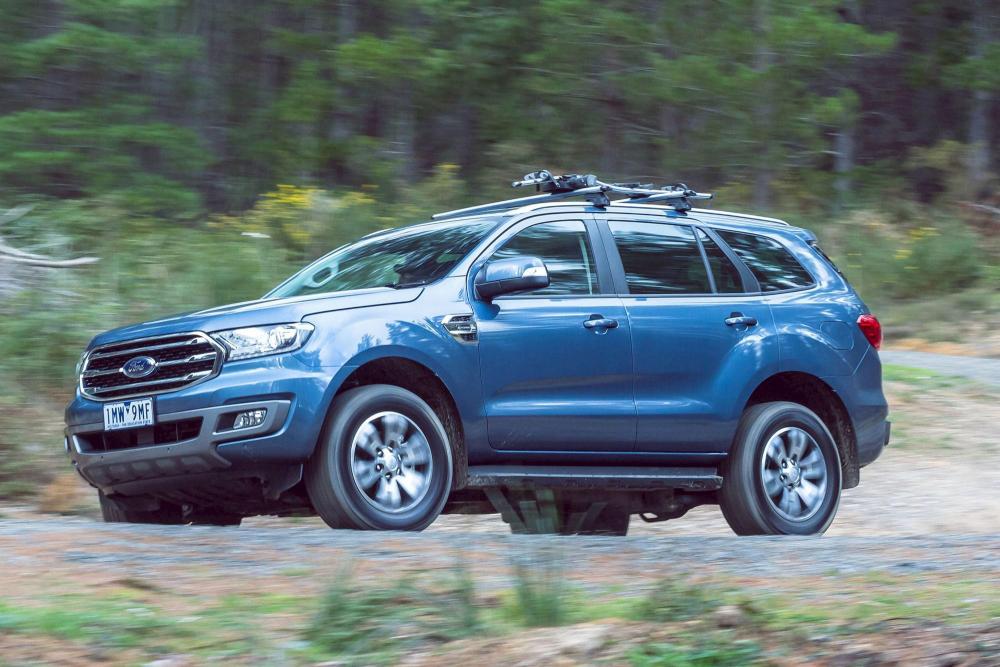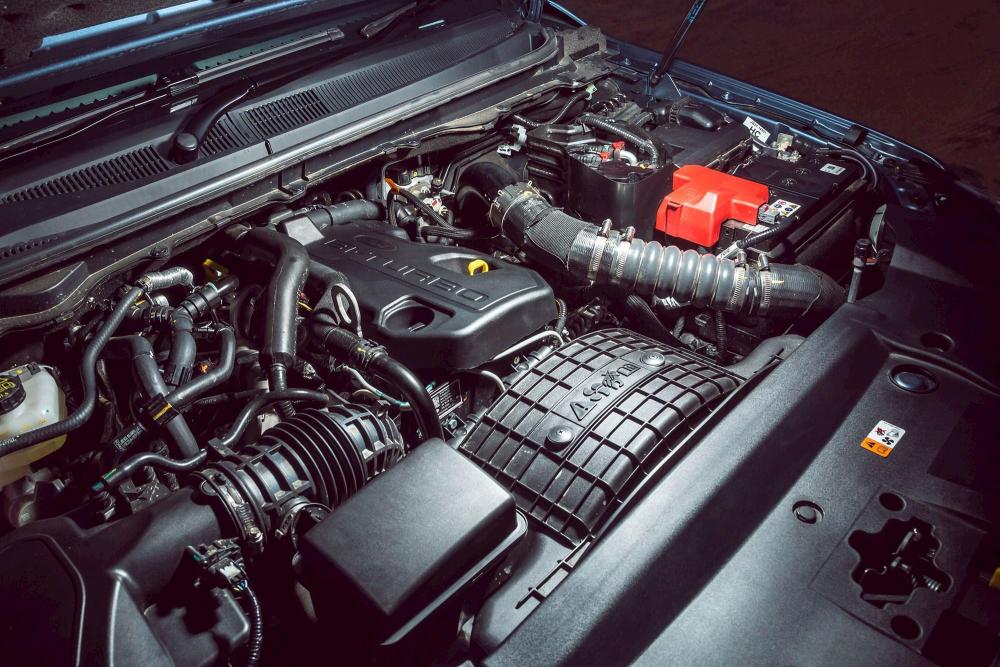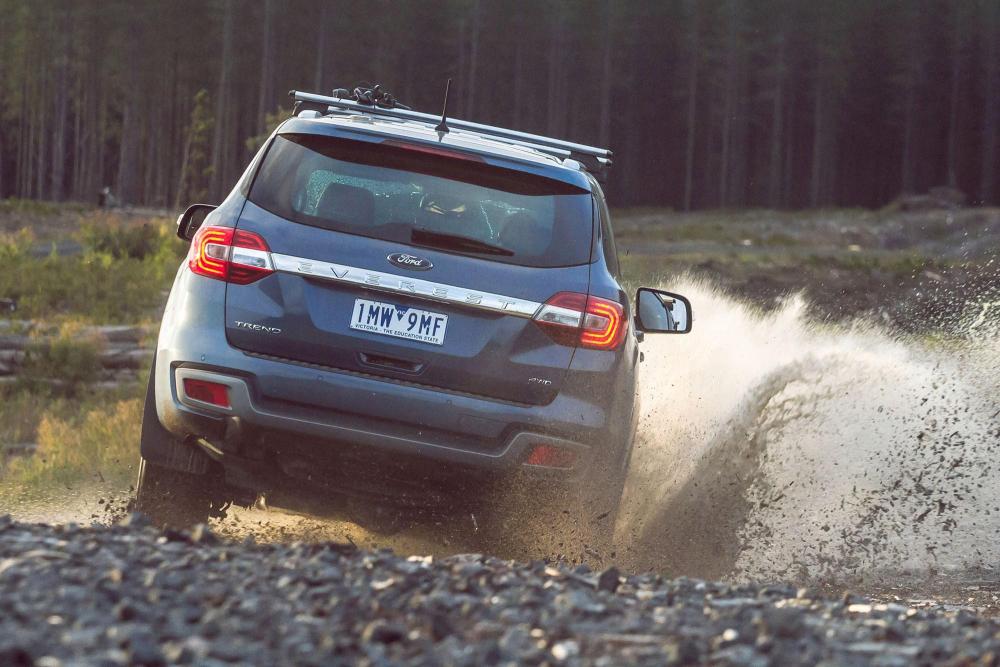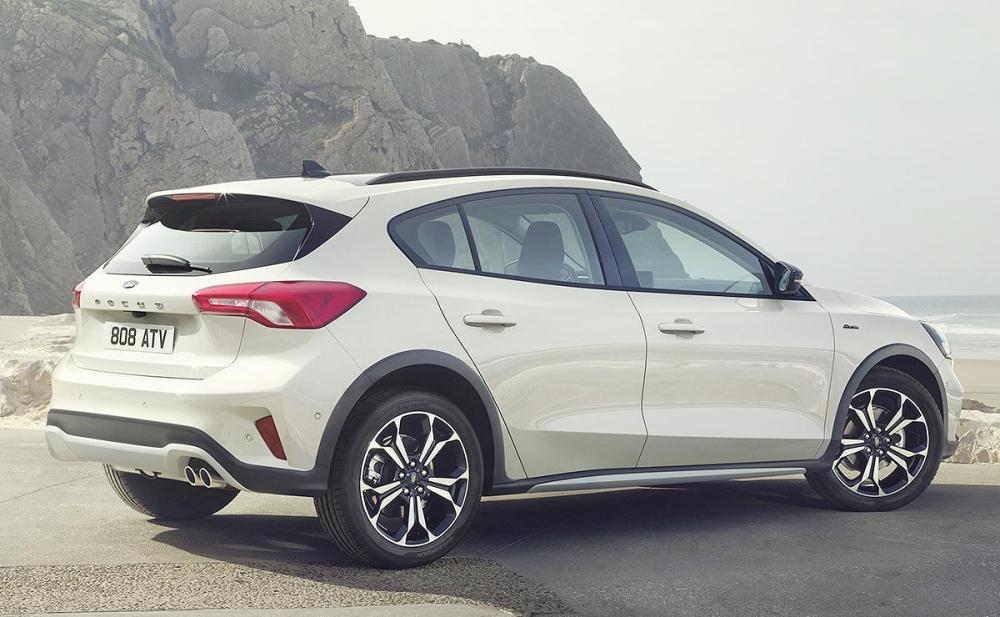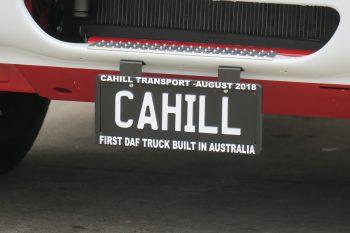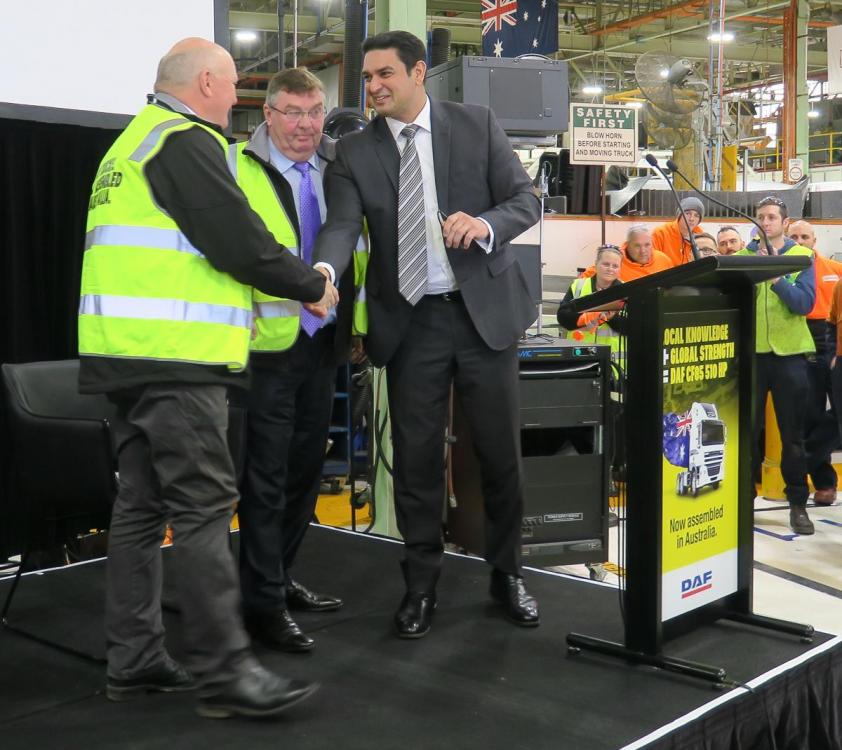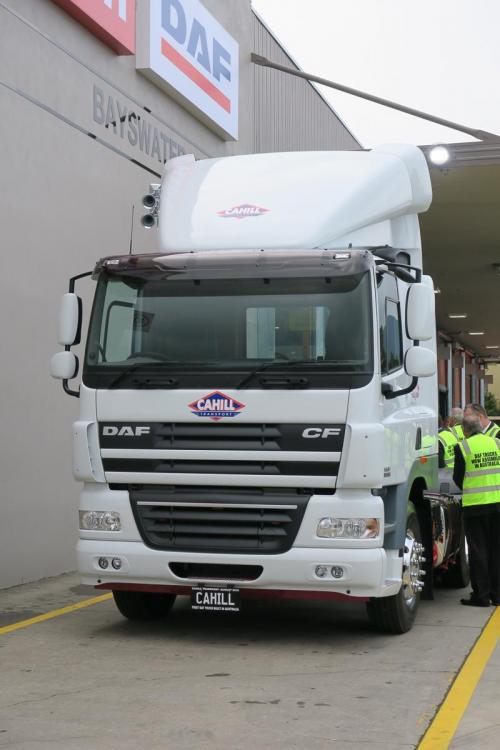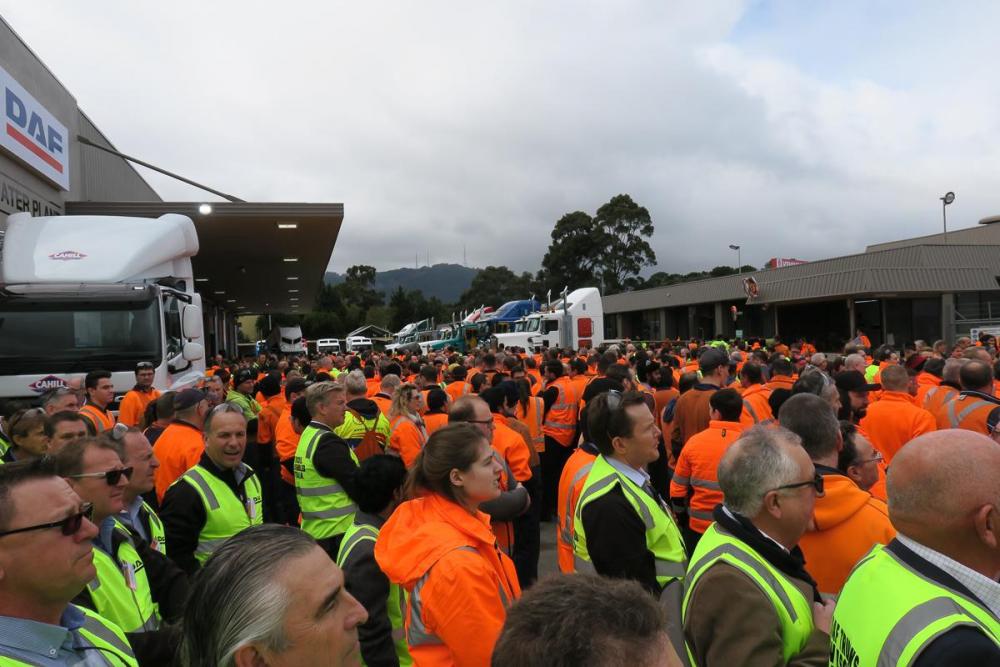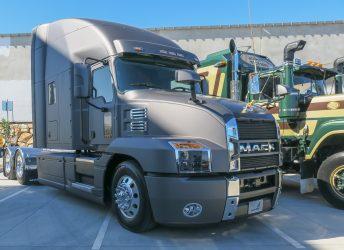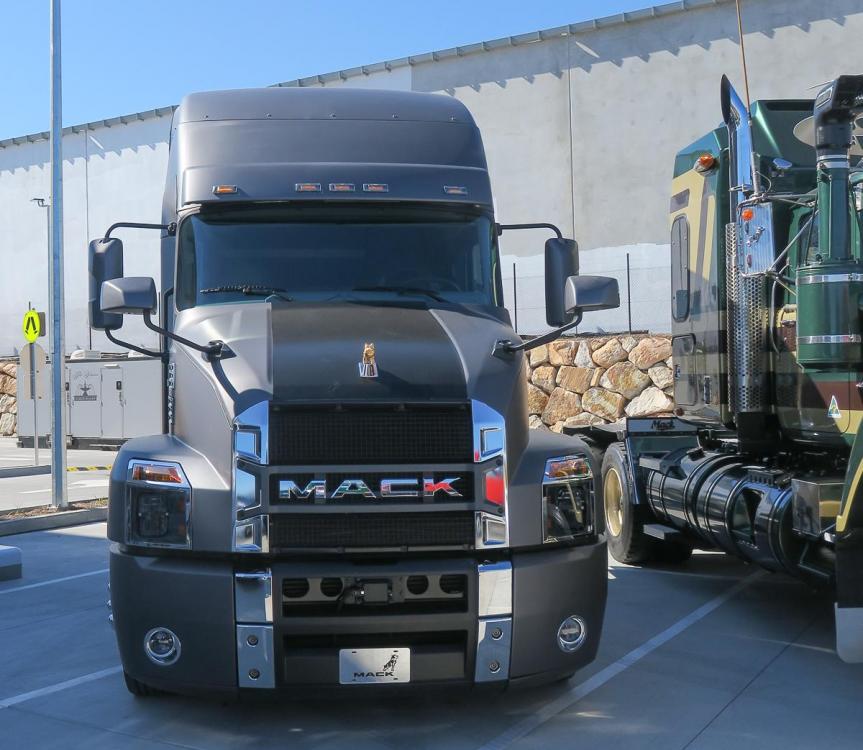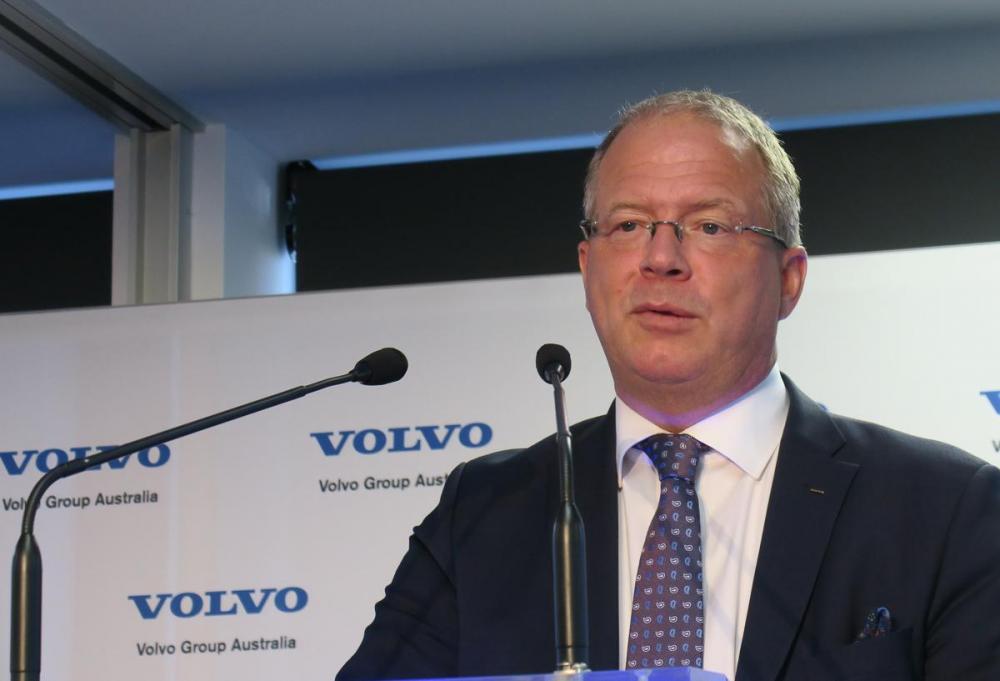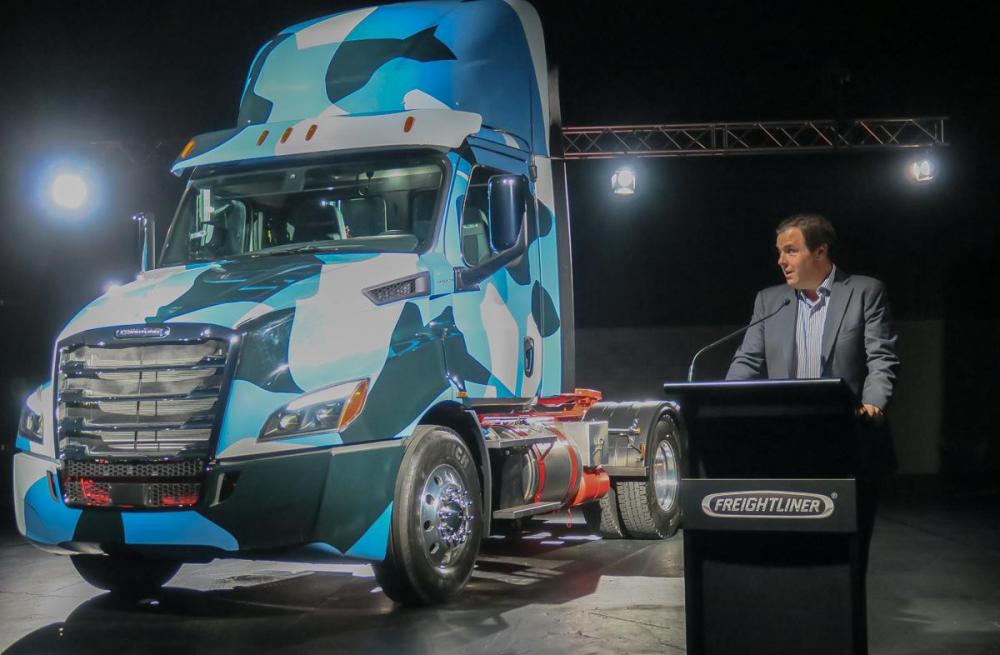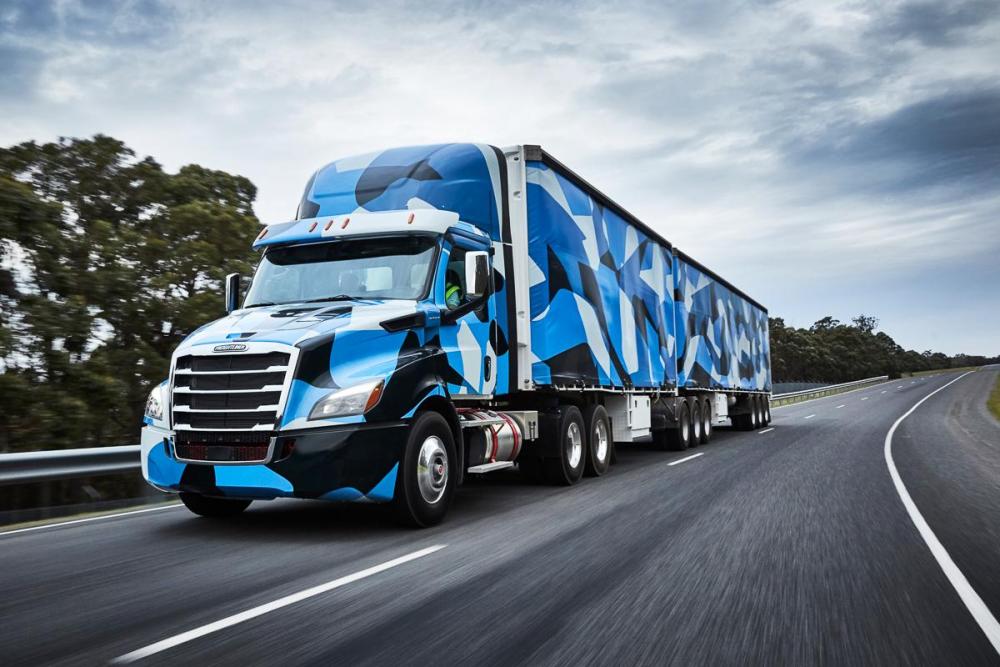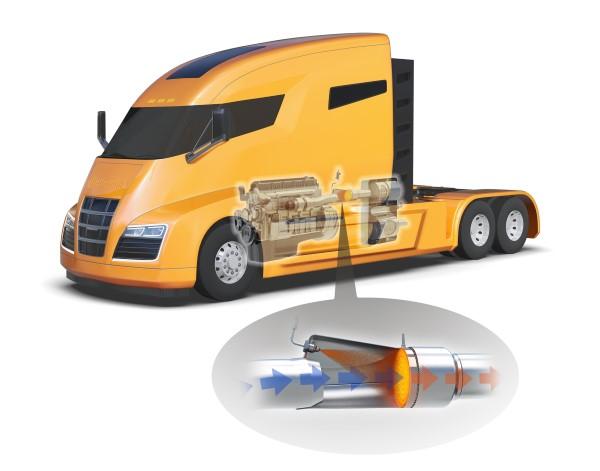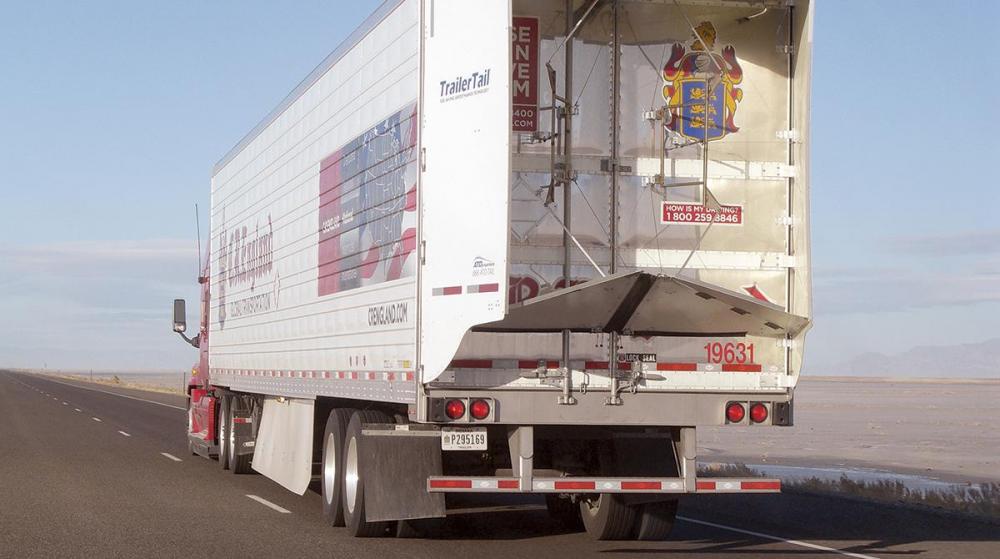
kscarbel2
Moderator-
Posts
18,854 -
Joined
-
Days Won
114
Content Type
Profiles
Forums
Gallery
Events
Blogs
BMT Wiki
Collections
Store
Everything posted by kscarbel2
-
Timmy and his family are good people. We've been previously introduced to his father Charlie and brother Jason. https://www.bigmacktrucks.com/topic/46921-kenworths-haul-train-innovation/?tab=comments#comment-346186
-
It's actually due to Germany's social welfare policies and its co-determination act of 1976 (Mitbestimmungsgesetz) which requires that half the seats on a company's board be held by Works Council (union) members (companies with over 2,000 employees).
-
The VW brand, not the whole VW Group, is the least profitable brand in the world, barely above zero. Porsche, Audi and Skoda, all very profitable, carry VW.
-
Ford Everest: A Raptor in seven-seat SUV drag David Kavermann, Drive, NZ / September 1, 2018 You could be forgiven for thinking the Ford Everest is all but identical to the Ranger ute; the only difference being the SUV body shell. But you’d be wrong. Although the idea of building a full-size SUV atop a ladder frame chassis isn’t unique to Ford — Holden, Isuzu and Toyota have all had a crack as well — the lengths Ford’s engineers, designers and marketers have gone to ensure the Everest isn’t mistaken for “just a truck” promises to elevate the company’s version to heights its competitors cannot match. Of course there are carryover parts between the Everest and Ranger, but like all things, it’s the attention to finer details and specific tuning changes that separate them behind the wheel. “Our goal with the new Everest was to take an already capable vehicle and make it more car-like,” explained Everest programme manager Dan Ciccocioppo. In the three years since the Everest’s debut, Australian-based Ford engineers have funnelled feedback from owners on both sides of the Ditch to improve the seven-seat SUV in four key areas: noise vibration and harshness (NVH), ride quality (or “plushness” as Ciccocioppo preferred to call it), safety and fuel economy. “We’ve listened to customer feedback to work out what they want and how they use their cars, but perhaps most importantly with the MY19 version, we’ve had the time to work through engineering changes, which we can now bring to market,” Ciccocioppo said. The Everest’s development was Australian-led, based out of Ford’s You Yang Proving Grounds in Victoria and included “millions of kilometres of testing around the globe.” For the New Zealand market, one fully-spec’d Ford Everest Titanium four-wheel drive will replace the current two-model Trend and Titanium line-up — with the first new models due to arrive in dealerships this month. Stylewise, the Everest Titanium will be available in new colours with HID auto levelling headlamps and 20-inch wheels. The grille and bumper have been slightly tweaked but the design keeps in line with the company’s top-selling Ranger. In the cabin, Titanium models feature full leather seating, dual glass sunroof, powerfold third-row seating with 50:50 split and illuminated stainless steel scuff plates. An 8-inch colour touchscreen display with Sync3, voice control and satellite navigation and 10-speaker audio system with amplifier is also standard. Beneath the bodywork are new hidden features such as keyless entry and a hands-free tailgate. There are new driver assist technologies, too, with Autonomous Emergency Braking, Traffic Sign Recognition and Blind Spot Information System with Cross-Traffic Alert fitted as standard. One of the biggest changes for the 2019 model is under the hood. The new Everest is powered by the same 2-litre four-cylinder Bi-Turbo engine found in the Ranger Raptor, producing more power (14kW), torque (30Nm) and improved fuel efficiency than the 3.2-litre five-cylinder it replaces. The Bi-Turbo engine produces 157kW of power at 3750rpm and 500Nm of torque between 1750 and 2500rpm. The Everest also gains the Raptor’s 10-speed gearbox, the same ’box found in the V8 Mustang. In Everest trim, Ford say the 10-speed has been calibrated to stay in the lowest gear possible. The new engine and gearbox increase towing capacity from 3 to 3.1 tonnes and a reduced fuel consumption rating from 8.5L/100km to 7.1L/100km. Driving the 2-litre and 3.2-litre back-to-back revealed the new engine to be a big step forward. It’s undoubtedly quieter and more refined, and the smaller capacity unit is more then up to the task of hauling the seven-seat SUV on- or off-road. Another key difference between the Everest and Ranger is the suspension set-up. Repositioning of the stabiliser bar — a design unique to the Everest — has allowed Ford to fit stiffer roll bars (reducing body roll) and soften spring rates to better absorb bumps. The changes result in a ride hold, feel and comfort few SUVs in this class can match. The Everest can soak up bumps with ease on uneven surfaces, all the while losing none of the off-road capability we’ve come to expect from the outgoing model. Logically, the Everest’s natural competition will come in the form of the ute-based Holden Trailblazer, Isuzu MU-X and Toyota Fortuner, but Ford believe the new updated model has to goods to attract customers loyal to established nameplates like the Land Cruiser Prado. With sales local sales totalling around 50 units every month, Ford is hoping the latest model will draw more interest in the relatively new nameplate. Add to that more than 1000 litres of boot space, improved on-road refinement and go-anywhere capability off-road,the Everest SUV could be one of the most under-rated models in New Zealand’s booming SUV market. Ford Everest Titanium Price: $87,990 (US$65,342) Engine: 2.0-litre turbo diesel, 10-speed automatic Pro: Greatly improved feature set, engine, ’box, ride comfort — without compromising off-road capability Con: Single model range could hinder entry-level buyers .
-
The Ford “Focus Active” compares with the Volkswagen CrossGolf and Sportsvan, and Suzuki SX4 S-Cross, none of which unfortunately are sold in the US market.
-
Ford scraps plan to import Focus Active amid U.S.-China trade war Michael Martinez, Automotive News / August 31, 2018 DETROIT — Ford Motor Co. on Friday said it is canceling plans to import a wagon version of the Focus to the U.S. from China because tariffs enacted by the Trump administration would cut into profits too much. The automaker won't reconsider its decision even if the tariffs are eventually dropped, a spokesman said. Ford had planned to bring the Focus Active to the U.S. in the second half of 2019 after discontinuing the sedan variant here. It had expected to sell fewer than 50,000 units a year. "The impact to our future sales is expected to be marginal," Kumar Galhotra, Ford's president of North America, told reporters on a conference call. "Our viewpoint is that, given the tariffs, our costs would be substantially higher. Our resources could be better deployed at this stage." The decision will mean the end of the venerable Focus nameplate in the U.S. Galhotra said the automaker did not see "significant risk" for its other two imports from outside North America: the EcoSport crossover from India and the Transit Connect van from Spain. The automaker is in the midst of a global restructuring expected to cost $11 billion over the next three to five years. It's revamping its North American vehicle lineup by eliminating all sedans in the coming years as it works to achieve 10 percent profit margins in the region. Ford said it would bring the Focus Active to the U.S. in April, when it announced the cuts to its sedan lineup and said it would be one of only two cars to remain at North American dealerships, along with the Mustang. The Focus Active already is sold in Europe, and Ford said it would continue with plans to build it in China for that market as well. Automakers have urged the Trump administration not to impose tariffs on vehicles built in China. General Motors recently asked for an exemption on its China-made Buick Envision, which is currently under review. If it doesn't receive that exemption, executives have warned that GM could drop that vehicle from its U.S. lineup. Ford said an exemption would not have applied to the Focus Active because of its production timing and thus did not seek one. The Trump administration has so far slapped 25 percent tariffs on $50 billion in Chinese goods. Bloomberg reported this week that the administration is considering a plan to impose duties ranging from 10 to 25 percent on $200 billion in Chinese imports as soon as a public-comment period concludes next week. .
-
VW exec touts potential of Ford partnership Christiaan Hetzner, Automotive News / September 1, 2018 WOLFSBURG, Germany -- Volkswagen Group expects that a strategic partnership with Ford Motor Co. would not unequally favor the German automaker even though it is nearly twice the size of its U.S. rival, said a key VW executive behind the potential deal. VW and Ford said in June that they were considering a joint development and production alliance that would include light commercial vehicles and could strengthen the companies' overall competitiveness. The goal would be to form a "strategic alliance," an upgrade over the industry's more common project-based cooperations. In his first public comments about the potential tie-up, Thomas Sedran said he was confident a final deal could be reached that would ensure both sides benefit equally. "When we finalize this alliance, you can be assured it will be balanced. There is no junior, nor senior partner, but rather two companies at eye level that will closely cooperate with one another," he said during an interview at VW's headquarters here. "There might be specific years where there will be a difference in production volumes, but in the sum total it is very balanced," he said, praising the early results from the teams performing due diligence. In his former job as VW's head of group strategy, Sedran played a key role in bringing the companies together. On Saturday Sedran took up a new role as CEO of VW's light commercial vehicle division. In terms of numbers, VW dominates Ford. It delivered 10.7 million vehicles worldwide last year, generating $268 billion in revenue vs. Ford's 6.6 million vehicle sales and $156 billion in revenue. This kind of mismatch has led to conflicts in the past. A similar strategic partnership that Volkswagen struck a decade ago with Suzuki bitterly collapsed after the Japanese company felt it was being bullied. Suzuki sued successfully to get back the 20 percent stake it had sold VW. VW's market capitalization is twice that of Ford's. Unlike with Suzuki, however, there are no equity interests or cross-shareholdings envisioned this time. Light commercial vehicles Volkswagen believes a deal could generate at least $464 million annually in gross added earnings in the midterm by focusing its initial efforts on the joint development and manufacture of light commercial vehicles such as delivery vans and utility trucks. "I wouldn't rule out anything [on the car side], but the focus is let's first get the LCV projects running," Sedran said. "We want a concrete project vehicle that has a start of production and a certain volume, and then can talk about other issues." Ford and VW previously cooperated on large minivans with the Volkswagen Sharan and Ford Galaxy built at the jointly owned AutoEuropa plant near Lisbon, Portugal, starting in 1995. Ford later sold its share to VW and moved the Galaxy onto its global C/D-segment platform that also underpins models such as the S-Max minivan and Mondeo sedan. "Ford was a logical partner. Other companies are already in alliances, but now the two market leaders in Europe are joining forces," Sedran said, adding that each only controls about 15 percent of the European light commercial vehicle market. That means he sees little risk that antitrust authorities might try to prevent a deal. "The product life cycles are a good match. We will build for them. They will build for us." Joint pickups? Sedran declined to reveal the range of planned projects, but several people familiar with the matter told Automotive News Europe that Volkswagen was looking to save development costs on a second-generation Amarok pickup. First debuting eight years ago, the VW truck that competes with Ford's Ranger is the only one of the group's 300-plus models to use body-on-frame construction common to pickups. The Amarok, built in South America and Europe, is not homologated for sale in the U.S. When rival Mercedes-Benz became the first premium brand to offer a pickup in November, it saved costs by using the Frontier's body-on-frame architecture supplied by partner Nissan. The X 250 d model even borrows the Japanese automaker's 2.3-liter engine -- only the flagship V-6 model comes with a Mercedes power plant. VW unveiled the Tanoak concept in March at the New York auto show. While the vehicle earned plaudits, insiders say it is unclear whether truck buyers would consider a unibody truck like the Tanoak when others, except the Honda Ridgeline, are body-on-frame. While the Amarok is the most obvious project in which VW is interested given its unique characteristics and advanced age, it is not the last. VW's Crafter cargo van had been a largely badge-engineered Mercedes Sprinter built in a Mercedes factory until the cooperation ended in 2016. Mercedes wanted to redirect the 50,000-unit annual capacity set aside for the Crafter for its own growth. The volume for the new Crafter, launched last year and developed by Volkswagen, has been modest compared with ambitions, however. Only 31,100 vans were delivered to customers through July worldwide, a fact officials attribute to the complex ramp-up of a model offered in various dimensions, body styles and drivetrain combinations. Ford is successful with the Transit commercial van and its Tourneo passenger version, achieving global volumes that exceed those of VW's respective Transporter and Multivan, the sixth-generation of the vehicle better known as the Microbus. "The problem is Volkswagen's other light commercial vehicles are all only a few years old -- the Caddy and Transporter were launched in 2015 and the Crafter only last year," said a source familiar with the talks, doubting these models would be able to contribute materially to VW's midterm synergy target. Many light commercial vehicle models are in the market for a decade or longer before being replaced, so it could be years before any of the trio is built on a Ford-VW joint architecture. Although Sedran's predecessor succeeded in lifting VW's light commercial vehicle division's operating margin by 310 basis points to 7.2 percent last year, he is still being benchmarked against Mercedes' 9 percent. Sharing costs with a partner would help protect returns. "We have to undertake enormous efforts to fulfill our emission targets and we see in the plans that the expenditure per vehicle is increasing considerably," he said. When Sedran sells a car version of a commercial vehicle, European regulators apply the same stringent fleet emission targets it applies for a Golf compact car even though a Multivan is much larger. "That was one of the drivers behind the talks with Ford, which has similar challenges," Sedran said. U.S. plans One aspect that might help forge ties is Sedran's skepticism about launching any commercial vehicles like the Crafter or Transporter in the U.S., which he does not believe is growing fast enough to support the entry of another player such as Volkswagen. The first product he thinks could have a realistic chance to compete there would be the full-electric I.D. Buzz van expected in 2022, Sedran declined to comment on whether Ford might gain access to VW's scalable MEB architecture for battery-powered vehicles. When asked whether he expected a deal between VW and Ford to be signed by year end, Sedran said he was optimistic. "We realized fairly quickly that it worked from a cultural perspective and there was the right chemistry with the main actors," he said. "At the end of the day both sides need to sign, but I'm confident since it's all been constructive and in a spirit of partnership."
-
BBC World News / September 1, 2018 Two people injured in a stabbing incident at Amsterdam's central railway station on Friday are American tourists, the US ambassador has said. "We are aware that both victims were US citizens and have been in touch with them and their families," Pete Hoekstra said in a statement on Saturday. The suspected attacker was shot and wounded by police. He was later identified as an Afghan citizen. Authorities said: "It has emerged the man had a terrorist motive." ------------------------------------------------------------------------------------------------------------------------ RT / September 4, 2018 The man who stabbed two American tourists at Amsterdam's busy Central railway station says he was motivated by insults to Islam in the Netherlands and that he chose his victims at random, according to prosecutors. The 19-year-old Afghan national, identified as Jawed S., said he traveled to Amsterdam from Germany – where he has residency – to carry out the attack, citing what he believes to be repeated insults against Allah, the Koran, and Islam's Prophet Mohammad in the Netherlands, the Public Prosecution Service wrote in a statement. The attacker specifically mentioned the name of the anti-Islamist Dutch politician Geert Wilders. However, he declined to mention the Prophet Mohammed cartoon contest that Wilders had planned on holding but recently canceled due to security concerns. Drawing the Prophet Mohammed is considered blasphemous in the Muslim faith.
-
1978 Mack RD770SX Tractor
kscarbel2 replied to j hancock's topic in Antique and Classic Mack Trucks General Discussion
X doesn't have a meaning as many assume (I need to scan this when time allows). In the "Mack Highway Vehicle Unit Symbol Definition" page of the salesman's manual (dated 6-65): S - Truck, six-wheel [Note: truck, not tractor] LS - Truck, six wheel, weight-reduced version SX - Truck, six-wheel, off-the-road dumper or mixer X - Truck, four-wheel, dumper or mixer Remember, the first digit indicated gross vehicle weight. For example, R487ST, the 4 indicates a GVW of 30,500 to 56,000 pounds, and a GCW of 53,000 pounds. For example, R685ST, the 6 indicates a GVW of 30,500 to 76,000 pounds and a GCW of 65,000 to 76,800 pounds. For example, DM863SX, the 8 indicates a GVW of 31,000 to 100,000 pounds. -
Timmy, are those wheels for Downer EDI?
-
Diesel News Australia / August 2018 At Bayswater in Victoria this week, a locally-produced DAF CF85 prime mover, the first DAF truck assembled in Australia was presented to, long-term customer and supporter of DAF, Cahill Transport, by Paccar Australia managing director, Andrew Hadjikakou. “Handing over the first locally DAF is not the only reason to be excited today,” said Andrew. “News has come to us from Paccar corporate, in Seattle. It was confirmed that over the next two and a half years Bayswater will expand this facility and by 2021 we will double our plant size. We will be able to build more trucks with higher levels of quality and better safety.” Andrew handed over the keys of the first DAF to directors of Cahill Transport, Michael and Daniel Cahill, at a ceremony where they took possession of the CF85 510hp prime mover at the end of the production line. DAF trucks are being scheduled into build slots that have previously been occupied solely by Kenworth trucks for the past 47 years. According to Paccar, the decision to locally produce the DAF CF85 will in time allow the company the opportunity to provide DAF customers with higher levels of customisation through local engineering input and greater cost savings through local parts sourcing. The new investment announced this week will see a doubling in size for the manufacturing facility at Bayswater. The current rectangular building will be extended to turn it into an L shaped building with all of the components arriving at a receiving point at one end. The journey of new Kenworths and DAFs will see the rearranged line deliver the finished product at the other end of the new facility, where it currently exits. This investment should further enhance the capacity of Kenworth and DAF to produce even more trucks than is currently possible and allow the company to reduce waiting times for new custom built product. Currently, the facility is producing 15 Kenworths every day. The project to bring DAF production to Australia only began just over a year ago and involved ten factory engineers and technicians travelling to the three European DAF production facilities. This team worked alongside the teams building the DAF product to learn all about all of the parts needed, build sequences, assembly processes and get experience in handling the unique tooling used to build the CF85. This team is now back working on the production line and travel down the production line with the DAF trucks to assemble them side-by-side with the Kenworth product. The current plan will see two DAF CF85s coming down the line each week in Bayswater. The process used to assemble the DAF CF85 here in Australia uses the CKD method, (completely knocked down). The truck arrives asa kit with all of the components required to create a new truck, apart from the wheels and tyres, which are sourced here in Australia. .
-
Owner-Driver / August 29, 2018 We take you for a walk-around tour of the iconic Kenworth Dealer Hall of Fame in Alice Springs, with more than 25 of the brand’s most memorable trucks on offer. From Australia’s first locally-built K125CR ‘Grey Ghost’, to the new Legend 900, and even the lesser-known T2000, the museum really does have a Kenny for everyone. After an expansion in 2015 the whopping 4,000sqm display was named the JJ Hurley Pavilion, after the industry great and former Brown and Hurley Group managing director was inducted onto the Shell Rimula Wall of Fame. As well as the various trucks and engines on show, the museum also exhibits a rich historical overview of the Kenworth story down under. It’s certainly a special place and one every truck enthusiast should visit at least once! Video Link - https://www.ownerdriver.com.au/industry-news/1808/kenworth-museum-video-tour-from-grey-ghosts-to-9ohs
-
-
Diesel News Australia / August 2018 The grand opening of the new Volvo national HQ saw the first Mack Anthem in Australia on the forecourt as the guests made their way into the event. The new facility was officially opened by Queensland Premier, Annastacia Palaszczuk, and Volvo Group Global President and CEO, Martin Lundstedt. The company’s new $30 million Australian headquarters and Brisbane South dealership accommodates modern offices, a large dealership (selling Volvo, Mack and UD Trucks) and a contemporary workshop on a 33,000 m3 site at the Metroplex Westgate business park. The Mack Anthem is not destined for Australian roads just yet. The truck on display was one of the first prototypes built for the truck’s launch in the US last year. It has been brought over to give potential customers an idea of the look and feel of the new model. The fact is it does look impressive in the metal, despite looking a little ‘Transformerish’ in many photos. Volvo also announced further investment to upgrade its Queensland truck factory at Wacol, near Brisbane. Martin said refurbishment of the Wacol truck plant will enable the Group to further increase production, signalling the company’s strong outlook. “Our increase in market share towards 27 per cent over the past five years, in combination with a strong heavy-duty truck market, makes it necessary to further increase our production capacity,” said Martin. “In the past five years alone, production at our Wacol factory has increased by 40 per cent. Investing in the Wacol factory, not far from our new national headquarters, will help grow our 27 per cent market share and give a boost to around 85 local component suppliers “Volvo Group Australia has been making trucks in Queensland since 1972 and we are extremely confident in the Australian market, we employ more than 1500 people across the country and have produced more than 60,000 trucks from the Wacol factory.” Welcoming the announcement, Annastacia Palaszczuk said the Wacol plant was a significant part of the state’s manufacturing base, employing almost 500 people. “Volvo Group is the only truck manufacturer to be awarded ‘Australian Made’ certification, and we’re particularly proud to call them Queensland-made,” said the Queensland Premier. “Their commitment to the State is a vote of confidence in our future and testament to the State’s economic strength.” For Volvo Group Australia President, Peter Voorhoeve, this was his last official function before taking leave of Australia and heading to the US to take over as President of Volvo Trucks North America. “The new headquarters is an energising space which will inspire our people on to greater things.” said Peter. ”The main building’s seven metre glass hangar door and 125 metre atrium were specially engineered to allow heavy vehicles inside, while the central staircase reflects a DNA helix shape linking each level.” .
-
Cascadia is Coming to Australia Diesel News Australia / August 2018 After a long gestation period and some false starts, the Freightliner Cascadia is coming to Australia. In fact, there are already Cascadias on the ground, as part of an ongoing development and evaluation program. Diesel News attended an unveiling of the new models in a darkened film studio in Melbourne. Ever since the introduction of the Cascadia on the US market, back in 2007, there has been a lot of speculation about if and when the model would be introduced to Australia. There was talk of the truck being unsuitable for Australia. In North America it is sold as a mass-produced highway truck used as a generic prime mover to haul the standard trailers on smooth interstate highways at masses below 40 tonnes. Freightliner in Australia had persisted with the older model designs like the Argosy, Coronado and Columbia. These are based on a vehicle platform which predates the development of the Cascadia. The design of which integrates many more global elements in the design, which are common across the Daimler truck family. The success of the Cascadia in North America has seen Freightliner regain number one status right across the heavier end of the market, as it continues to grow market share to over 40 per cent in the heavy duty prime mover market. US interstates are populated with processions of Cascadias with a few competitor brands sprinkled into the mix. A completely new Cascadia was launched onto the US market last year bringing the whole vehicle platform bang up to date and Freightliner in the US is claiming fuel improvements up to eight per cent for operators, over the previous model. “The business case of the truck is unquestionable,” says Daniel Whitehead, Daimler Trucks President and CEO in Australia. “Once operators test the truck and get bums in seats, we’re expecting to be equally successful in both large and small fleets. We have very high ambitions. “We’ll be selling Cascadias in the first quarter of 2020 and handing over keys. There will be right hand drive Cascadias on the road in early 2109. We learnt a lot of good lessons from the Mercedes Benz evaluation program. Stephen Downes sat down with the Benz guys and went through their whole testing program, and asked what they would have done differently in hindsight. It was a key success factors for Benz and it will be one of the key success factors for Cascadia as well. “Nothing ends as a result of Cascadia. What we have with the 116 and the 126 is launch group one. When we get to launch group two we haven’t got a clear definition of those models, not yet. Columbia and Coronado, they keep going, there’s no decision yet. When we have defined the later Cascadia trucks, we will revaluate the trucks on the older truck architecture.” Initially, the Cascadia in Australia is to be tested in its left hand drive form. This is an opportunity to test aspects like driveline and running gear while the right hand drive aspect can be developed and refined back in the US. The second wave of evaluation trucks will be right hand drive as Freightliner gets closer to the final specifications required to suit Aussie conditions. “For the Freightliner brand in Australia the Cascadia represents an unparalleled opportunity,” says Stephen Downes, Freightliner Australia Director. “It’s an opportunity to reinvent ourselves and deliver all of the things we know operators are looking for. The opportunity is in the technology the model delivers, whether that’s from the safety point of view, connectivity, fuel efficiency, telematics or just the quality and reliability of the vehicle. “Cascadia is a real game changer for the Australian market, for conventional trucks. If I had told you five years ago we would have a conventional with not one, but two driver airbags, you would have laughed at me. That is not too far away. It’s an opportunity to get safety system you might find in a high level passenger car out into the trucking industry. “I need to be 100 per cent certain the Cascadia will be fit for purpose in Australian conditions with Australian operators under our own unique set of circumstances. For that reason we are going through an effort we have never been through before make sure these trucks are really up to scratch.” .
-
Prime Mover Magazine / August 31, 2018 The National Road Transport Association (NatRoad) in association with PACCAR and the PACCAR Dealer Network have announced ‘Future-Ready’, a program devised to address the national skills shortage it was announced today at the 2018 NatRoad Annual Conference. In what is considered an industry first, road transport operators and the commercial vehicle manufacturer are partnering to take a long-term strategic approach to industry wide shortages for drivers and other logistics workers. With less than 15 per cent of truck drivers under the age of 30, the aging driving workforce is ill-prepared for a road freight task that is expected to double by 2030. Warren Clark, NatRoad CEO said transport business across the country provided a link between manufacturers, producers and retailers to keep Australia moving. “However, with the average age of current drivers now 53, and the difficulties with getting insurance for those under the age of 25, the problem is compounding. It is becoming increasingly hard to recruit skilled drivers,” he said. “When you combine all the factors around the driver shortage, like women accounting for about one per cent of drivers, as well as inadequate facilities and lack of cultural diversity, we as an industry need to ask the hard questions and find the answers.” According to Clark, NatRoad had identified key areas for tackling the driver shortage problem. These included improving the overall professional status through work with government agencies and trade bodies to develop recognised industry trades, addressing insurance for solutions, and seeking to improve the image of the industry through non-traditional approaches. “Attracting younger workers to the road transport industry is a priority for NatRoad. This project will draw more young people into the sector and diversify the workforce. The introduction of the program will also provide the impetus for the next generation to consider a career in the sector.” Ross Cureton, PACCAR Director for Product Development said all facets of the industry needed to be explored including efforts for making trucks, from a manufacturing standpoint, easier to drive. “We are taking a proactive approach to find a lasting solution to address the skills shortage problem,” he said. Tony Hurley, Group General Sales Manager, Brown & Hurley said he was delighted to be on board as a partner of the initiative. “It just makes sense. This issue is nation-wide and needs to be dealt with by all sectors of the road transport industry which NatRoad and ourselves are well placed to do.”
-
Big Wheels Malaysia / August 30, 2018 Continental will be presenting solutions to support even more efficient exhaust after-treatment in trucks at the upcoming 67th International Commercial Vehicle Show (IAA) in Hanover, Germany next month. The primary aim is to ensure more efficient conversion of the nitrogen oxides (NOx) into harmless emissions, whether on heavy-duty long-haul trucks, urban light trucks or municipal vehicles. The challenge centers on ensuring that the exhaust aftertreatment system reaches – and maintains – an efficient working temperature as quickly as possible after starting the engine. However, the possibilities for integrating catalysts and filters differ greatly from vehicle to vehicle. Not all models offer scope for close-coupled mounting of the catalyst and filter. On some models such a configuration may be out of question for many years to come, due to the long design cycles of heavy-duty truck frames. Continental has therefore developed solutions that make it possible to achieve further improvements in NOx conversion efficiency whichever of these two situations applies. At the IAA in Hanover, the company will present both types of solution – close-coupled systems and, alternatively, an architecture based on an innovative combination of diesel injection into the exhaust stream and an electric heating element mounted upstream of the catalyst. “In the future, ensuring real-world compliance with new standards will require a vast improvement in the NOx performance of both long-haul and urban commercial vehicles,” says Dr. Markus Distelhoff, Executive Vice President Fuel & Exhaust Management Business Unit, Powertrain Division. “The exhaust aftertreatment solutions we are presenting in Hanover for these two different basic architectures contribute both to improved fuel efficiency and reduced NOx emissions.” In passenger cars, the catalytic converter is often mounted very close to the engine, ensuring that the interior of the catalytic converter reaches the necessary operating temperature as quickly as possible. The same approach is not always possible in a truck due to lack of space. Continental offers two solutions to this problem. Use of a new ‘concertina-type folding technique’ in the catalyst makes it easier to implement asymmetrical catalyst dimensions that are more closely adapted to the available packaging space. “With the new folding technique, it is possible to maximize the scope for OEMs to accommodate a close-coupled DOC in heavy-duty trucks,” says Dr. Manuel Presti, Program Manager Fuel & Exhaust Management Business Unit. At the same time the slanted metallic CS substrate (CS: crossversal structure), which is able to dispense with a flat intermediate layer, also allows the mass of the system to be reduced by approximately 20%. .
-
Impressive. Oz has some of the most innovative trailer manufacturers.
-
Trailer-Body Builder / August 30, 2018 Tieman Tankers, an Australian tanker manufacturer, recently released a video of its new 26-meter (85-foot) Fuel Liner tanker built for Hills Tankers using Australia’s approved Performance-Based Standards. The tanker offers significant payload increases – up to 36 percent – over Tieman’s standard 25m B-doubles at higher mass limits (HMLs), the company said, and safer cruising speeds, with “exceptional” tracking at 100 km/h (62 mph). Peter Blair, general manager for Hills Tankers, also indicated the Fuel Liner provides advantages over larger tankers that are limited to 90 km/h on HML routes, improving scheduling, and often are more “problematic to operate in terms of road access, flexibility, and therefore, efficiency.” Tieman said it designed the versatile, low-profile tanker barrels to future proof Hills’ investment, with each barrel’s capacity allowing for any future increases in mass as infrastructure improves. Hills Tankers opted for Hendrickson MAXX22T trailer air disc brakes for the tanker. The MAXX22T utilizes single piston disc brake technology for improved service life and reduced weight. Tieman also reports its Tank Liner range of 26m A-doubles are achieving enhanced swept-path benefits over 25m B-doubles, with or without steer axles, saying drivers are pleased with how they handle. Ian Glover, driver trainer for Hills Tankers, concurs. “You can, at times, actually turn left at a roundabout or a junction from the left-hand lane,” he said. “You don’t actually have to utilize two lanes to make a turn.” .
-
I'm absolutely shocked.....shocked I tell you, to hear that the tariff exemption process could be replete with mistakes, arbitrary, opaque and subject to political favoritism. Say it isn't so.
-
Senator calls for investigation of tariff exemption process Kevin Jones, Trailer-Body Builder / August 30, 2018 Sen. Elizabeth Warren says the Trump administration is playing politics, and handing out favors to friends, in the Commerce Department’s management of the exemption process for steel and aluminum tariffs. On Wednesday Warren called on the department’s Inspector General (IG) to open an investigation into the implementation of the program, initially billed as a "fair and transparent" way for U.S. manufacturers to seek tariff relief in certain instances. But Warren’s own preliminary investigation has revealed the process to be “replete with mistakes” and “arbitrary, opaque and subject to political favoritism.” "Thousands of companies are seeking exemptions worth billions of dollars that affect manufacturing and investment decisions nationwide," the Massachusetts Democrat writes to IG Peggy Gustafson. "But this process appears to be running on an ad hoc basis, with little transparency, and bending to political pressure from well-connected lobbyists and Administration officials." Specifically, to date Commerce has received 30,035 exemption requests for tariffs on steel (25%) and aluminum (10%) imports, and has made decisions on 3,559 of those, approving 2,101 and denying 1,458, according to department data. But, as tens of thousands of requests are left hanging, special friends of the administration have received special treatment, Warren contends. On August 7 she sent a 10-page letter to Secretary of Commerce Wilbur Ross after she found that Rusal America Corporation had received an exemption for aluminum, good for 6.6 million pounds’ worth, tariff free. The kicker: Rusal is a subsidiary of a sanctioned Russian company controlled by Oleg Deripaska, a sanctioned Russian oligarch and a "close Putin confidant,'' the letter states. And the day after Warren sent the letter, the Commerce Department reversed the exemption—but still has not explained how a sanctioned Russian company got an exemption for millions of dollars of aluminum imports just days after President Trump met privately with President Putin in Helsinki. More details of how the Rusal exemption was approved are “equally alarming,” the senator writes: The July exemption was approved after Commerce Department officials appeared to privately inform Rusal that the company needed to provide more information in a new submission; this even though Rusal appeared to have made no effort to find alternative U.S. producers; and over the objection of a domestic producer of the material sought by Rusal. Additional media reports have raised questions about political interference in the exemption process, Warren continues. United States Steel and Nucor—two of America's biggest steel manufacturers with deep ties to the Administration—have successfully objected to hundreds of exemption requests. And, earlier this month, reports revealed that Office of Management and Budget Director Mick Mulvaney was "trying to use his influence" to urge the Trump administration for an exemption for a company whose president contributed $5,400 to Mulvaney's 2016 congressional campaign, the senator says. Warren asked the Commerce IG to conduct a thorough investigation of the department's process for evaluating tariff exemption requests, including an analysis of the processes and procedures in place to make these decisions, whether Commerce officials are following these policies and procedures, and any credible evidence that tariff exemptions granted by the department have strengthened the national security of the United States.
-
DOJ, Trailer Manufacturers Argue Over Regulations
kscarbel2 replied to kscarbel2's topic in Trucking News
Subjecting non-emissions producing trailers to federal emissions requirements........go figure. -
Transport Topics / August 30, 2018 Attorneys for the U.S. Department of Justice and trailer manufacturers are sparring in court over just how much information the government should provide in a lawsuit about whether truck trailers should for the first time be subject to federal emissions requirements. The Truck Trailer Manufacturers Association in late 2016 asked an appeals court to block a provision in the Obama administration’s Phase 2 greenhouse gas emissions rule that includes trailers. Now, the group has complained that the U.S. Environmental Protection Agency and National Highway Traffic Safety Administration have been dragging their heels in reporting to the court their progress and timeline for making a decision on whether to keep the rule intact or repeal it. EPA and NHTSA issued the rule regulating trailers. This month, Justice Department attorneys complained in court documents that the trailer manufacturers are unfairly trying to speed up the rule-making process. “First, the agencies cannot provide the kind of detailed report to satisfy petitioner’s curiosity without revealing protected deliberations,” lawyers for EPA and NHTSA said in a response to the court. “Second,” they added, “a litigant’s mere dissatisfaction with the pace of a discretionary administrative proceeding is no reason for the court to order relief.” TTMA told the court last month it is dissatisfied with the slow pace and lack of transparency by attorneys for the federal agencies. Outside the courtroom, the agencies have told manufacturers they don’t believe they have the authority to regulate trailer manufacturers, according to TTMA President Jeff Sims. In the end, that could make the lawsuit a moot issue. “EPA has written us a year-and-a-half ago that they agree trailers are not supposed to be in it, and said ‘we’ll get you out of it,’ ” Sims told Transport Topics, referring to the regulation. “We got a carbon-copy letter from NHTSA also. So they have both agreed they don’t have the authority to regulate trailers and they’re working to get us out of it. But they’re not doing it very fast. We just want closure on this thing.” In court filings, the association said it is merely asking this court to compel respondents to “comply meaningfully with the court’s order to file status reports, by substantively addressing the status of their progress and providing a timeline for completion of their administrative reconsideration processes.” Despite delays in the lawsuit, trailer orders reached a record high of 29,300 in July, shattering the previous high of 28,058 for the month that had stood for 24 years, ACT Research Co. reported. Dry vans and refrigerated trailers paced the overall performance, closing the month with backlogs that now stretch into March of next year, ACT recently reported. “After a steady June [20,048 orders], fleets came roaring back into the market in July. Trailer makers had their strongest July net order volume in history, breaking a record that was set in 1994,” Frank Maly, ACT’s director of commercial vehicle transportation analysis and research, said in a statement. He said while strength was evident across all industry segments, it is noteworthy that cancellations remain low, indicating strong fleet confidence. Glen Kedzie, energy and environmental affairs counsel for American Trucking Associations, said ATA does not support elimination of the trailer provision. “It is never prudent to threaten the Department of Justice or EPA’s internal administrative regulatory timelines and priorities, especially given that the 2018 trailer requirements under Phase 2 are not currently being implemented by stay of the court.” Kedzie added, “Given the wide-range of proven fuel-efficient technologies for trailers that are readily available in today’s marketplace, as well as the marginal 2018 fuel efficiency milestones under Phase 2, it would not surprise me if the initial greenhouse gas targets for trailers are being met in the absence of the rule being implemented.” .
BigMackTrucks.com
BigMackTrucks.com is a support forum for antique, classic and modern Mack Trucks! The forum is owned and maintained by Watt's Truck Center, Inc. an independent, full service Mack dealer. The forums are not affiliated with Mack Trucks, Inc.
Our Vendors and Advertisers
Thank you for your support!



